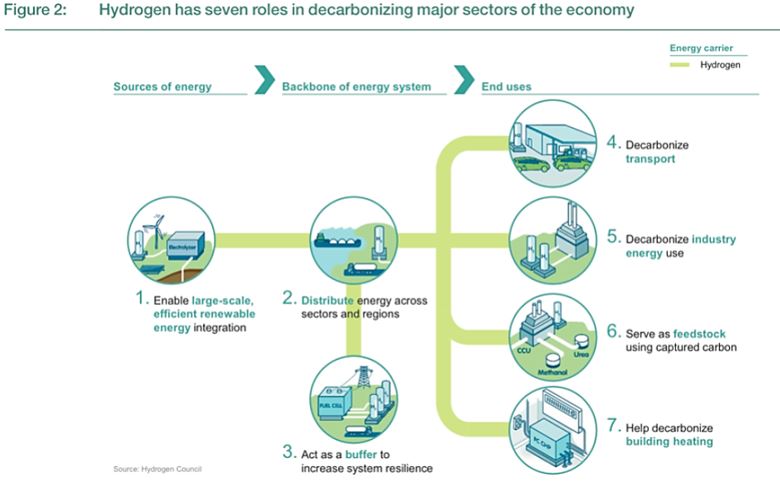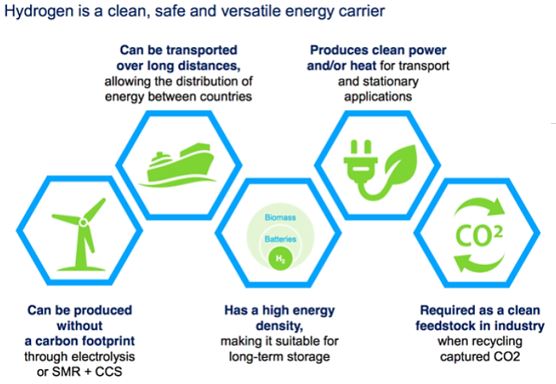Green hydrogen refers to electrolytic hydrogen produced using electricity generated from renewable energy sources, and also to hydrogen produced via different methods using other renewable sources such as biogas, biomethane, bio-waste and other renewable sources. Since hydrogen’s production translates into extracting it from its compound by using energy from other primary sources, it is an energy carrier used to move, store, and deliver energy.

Source: Hydrogen Council (http://www.hydrogencouncil.com)
The uses of the H2 can be grouped into two large categories:
- Hydrogen as a feedstock in the chemical industry (production of ammonia, fertilizers and methanol), as a reducing agent in the metallurgic industry, flat glass production, electronics industry, fuel production and electricity generation. Most hydrogen used in industry fits in this category.
- Hydrogen as an energy vector. The versatility of hydrogen and its multiple utilizations is why hydrogen can contribute to decarbonize existing economies. Hydrogen’s role in the decarbonisation process can be summarized as shown in the graph below.
The use of H2 for electricity generations is through Fuel Cells. Fuel Cells are electrochemical devices which transform the chemical energy of the fuel oxidation reaction into electrical energy. The result of its use, apart from the power generations, is only the pure water that was originally used in its production and that can be recovered and reuse.

The most important hydrogen storage methods include physical storage methods based on either compression or cooling. In addition, hydrogen can be stored using solids (Metal Hydrides), liquids, or surfaces. In terms of transportation, the most common means are compressed gas cylinders or cryogenic liquid tankers; pipelines or blending with natural gas.
Renewable hydrogen is generally more expensive, although prices are becoming more competitive.
Comments ()